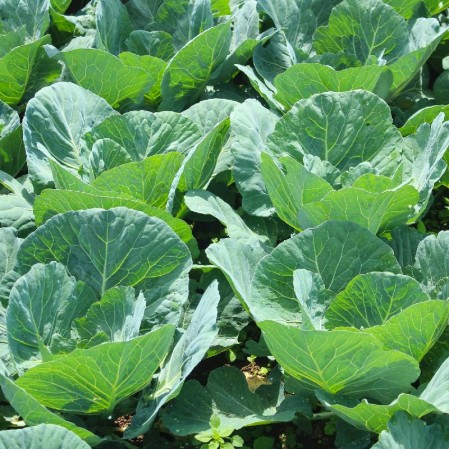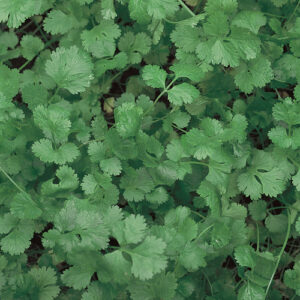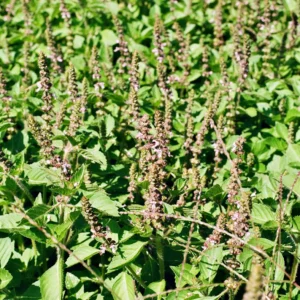vates variety of collards
To plant Vates variety of collards, follow these steps:
1. Choose the Right Location: Select a spot in your garden that receives full sun to partial shade. Collards thrive in well-draining soil with a pH between 6.0 and 7.5.
2. Prepare the Soil: improve its fertility and texture. Remove any rocks, debris, or weeds from the planting area.
3. Planting Seeds: Sow collard seeds directly into the garden soil, about ¼ to ½ inch deep. Space the seeds 12 to 18 inches apart in rows that are 18 to 24 inches apart. You can also start seeds indoors 4 to 6 weeks before the last frost date and transplant seedlings outdoors once they have a few sets of true leaves.
4. Watering: Keep the soil consistently moist, especially during dry periods. Water deeply to encourage strong root growth. Avoid overhead watering to prevent the spread of diseases.
5. Fertilizing: Collards are moderate feeders. Apply a balanced fertilizer (such as 10-10-10) or compost when the plants are about 6 inches tall, and again when they start to form heads.
6. Thinning: Once the seedlings emerge, thin them to the strongest plants, leaving the desired spacing between them.
7. Mulching: Apply a layer of organic mulch, such as straw or shredded leaves, around the plants to conserve moisture, suppress weeds, and maintain soil temperature.
8. Pest and Disease Management: Monitor for pests like cabbage loopers, aphids, and cabbage worms. Handpick pests or use organic insecticidal soap if necessary. Practice crop rotation to reduce the risk of diseases.
9. Harvesting: You can start harvesting outer leaves when they are large enough to eat, usually around 60 to 80 days after planting. Cut leaves from the bottom of the plant, leaving the center intact to continue producing new growth.
To plant Vates variety of collards, follow these steps:
1. Choose the Right Location: Select a spot in your garden that receives full sun to partial shade. Collards thrive in well-draining soil with a pH between 6.0 and 7.5.
2. Prepare the Soil: improve its fertility and texture. Remove any rocks, debris, or weeds from the planting area.
3. Planting Seeds: Sow collard seeds directly into the garden soil, about ¼ to ½ inch deep. Space the seeds 12 to 18 inches apart in rows that are 18 to 24 inches apart. You can also start seeds indoors 4 to 6 weeks before the last frost date and transplant seedlings outdoors once they have a few sets of true leaves.
4. Watering: Keep the soil consistently moist, especially during dry periods. Water deeply to encourage strong root growth. Avoid overhead watering to prevent the spread of diseases.
5. Fertilizing: Collards are moderate feeders. Apply a balanced fertilizer (such as 10-10-10) or compost when the plants are about 6 inches tall, and again when they start to form heads.
6. Thinning: Once the seedlings emerge, thin them to the strongest plants, leaving the desired spacing between them.
7. Mulching: Apply a layer of organic mulch, such as straw or shredded leaves, around the plants to conserve moisture, suppress weeds, and maintain soil temperature.
8. Pest and Disease Management: Monitor for pests like cabbage loopers, aphids, and cabbage worms. Handpick pests or use organic insecticidal soap if necessary. Practice crop rotation to reduce the risk of diseases.
9. Harvesting: You can start harvesting outer leaves when they are large enough to eat, usually around 60 to 80 days after planting. Cut leaves from the bottom of the plant, leaving the center intact to continue producing new growth.





